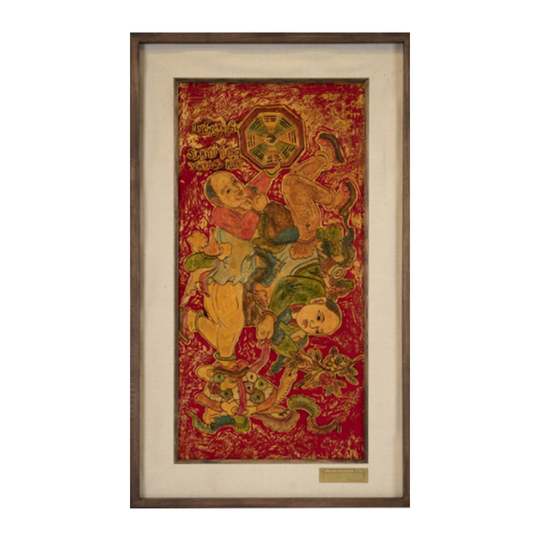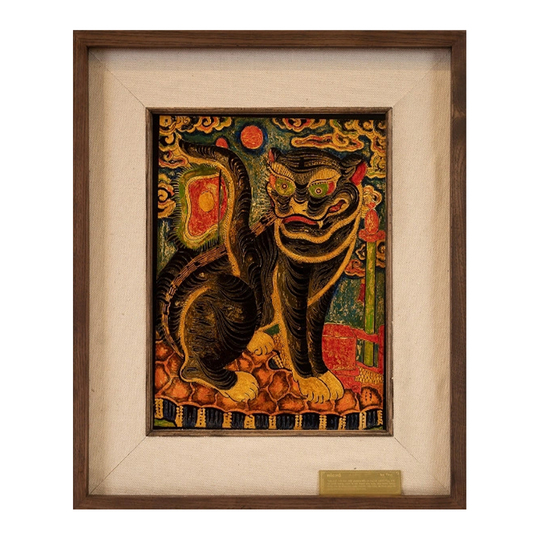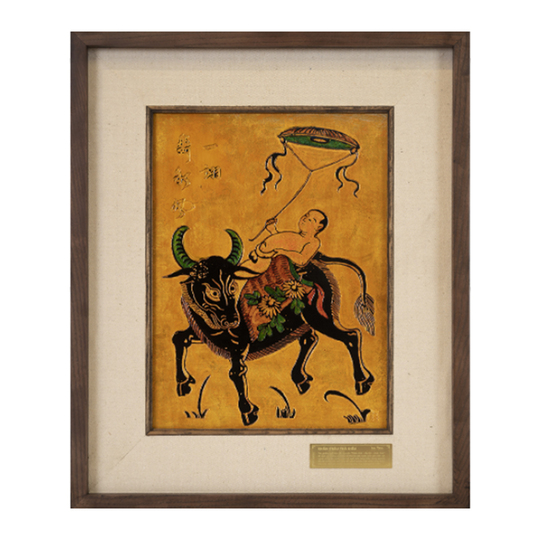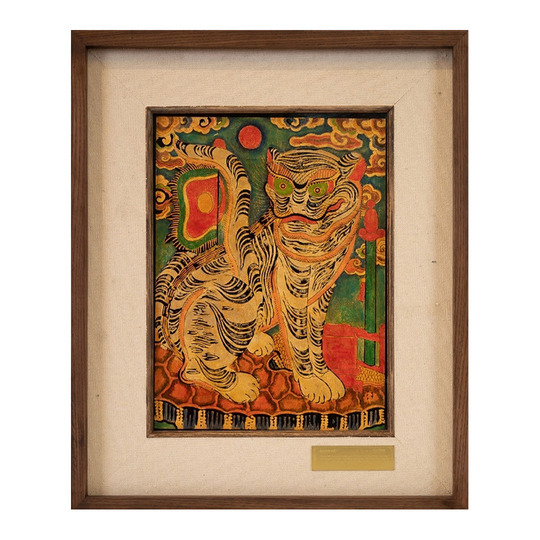+84.39.418.9999
Lacquer Painting ( LƯỠNG NGHI SINH TỨ TƯỢNG )
Original price was: $8,000.00.$6,500.00Current price is: $6,500.00.
The folk painting “Lưỡng nghi sinh tứ tượng” (The Two Forms Generate the Four Images) concisely and logically expresses the meaning of “Thái cực sinh Lưỡng nghi, lưỡng nghi sinh tứ tượng” (The Supreme Ultimate generates the Two Forms, the Two Forms generate the Four Images). The wisdom inherent in this folk painting subtly yet powerfully demonstrates the origin of Eastern culture belonging to the Lạc Việt civilization, the source of Vietnam with its nearly 5000 years of văn hiến (civilization and culture).
In the painting, there are two children, but when viewed horizontally and vertically, they combine to form four children. The four figures of the children forming a square symbolize Yin, meaning the “Four Images” are attributes of Yin, representing movement. Yang is stillness, Yin is movement, and the Four Images are the four interacting states present from the very beginning of the universe according to the Yin Yang and Five Elements theory, encompassing mutual generation, mutual overcoming, overacting, and insulting. Because of this constant movement and interaction, distinct separation between states is impossible.
The painting also features another important symbol: the turtle. The turtle symbolizes the written civilization of the Lạc Việt people. An ancient Chinese text records, “During the reign of Emperor Yao, the Việt Thường tribe offered a large turtle, on whose shell were Khoa Đẩu script characters, recording the opening of heaven and earth” (from Trịnh Tiều’s Thông Chí). Thus, the turtle is the means of recording the Lạc Việt people’s written civilization from ancient times before the invention of paper. Thái Cực, Lưỡng nghi, and Tứ tượng represent the initial stages of the universe’s movement; or, in other words: the “opening of heaven and earth.” The “Four Images” child stepping on the turtle’s shell is a sharp depiction proving its belonging to the Lạc Việt civilization and its recognition since the most ancient times, when the ancestors of the Lạc Việt used turtle shells to record their knowledge. This is also a profound symbolic meaning of this painting.
Lưỡng Nghi encompasses the two forms, Yin and Yang. Yin symbolizes darkness, black color, cold, low-lying areas, night, the moon, winter, etc. Yang symbolizes light, white and red colors, heat, high-lying areas, daytime, the sun, summer, etc. They always maintain balance and cannot be separated. Once these two forms cannot achieve a state of balance or are separated, it will bring about unfavorable conditions for the environment and humans.






Reviews
There are no reviews yet.